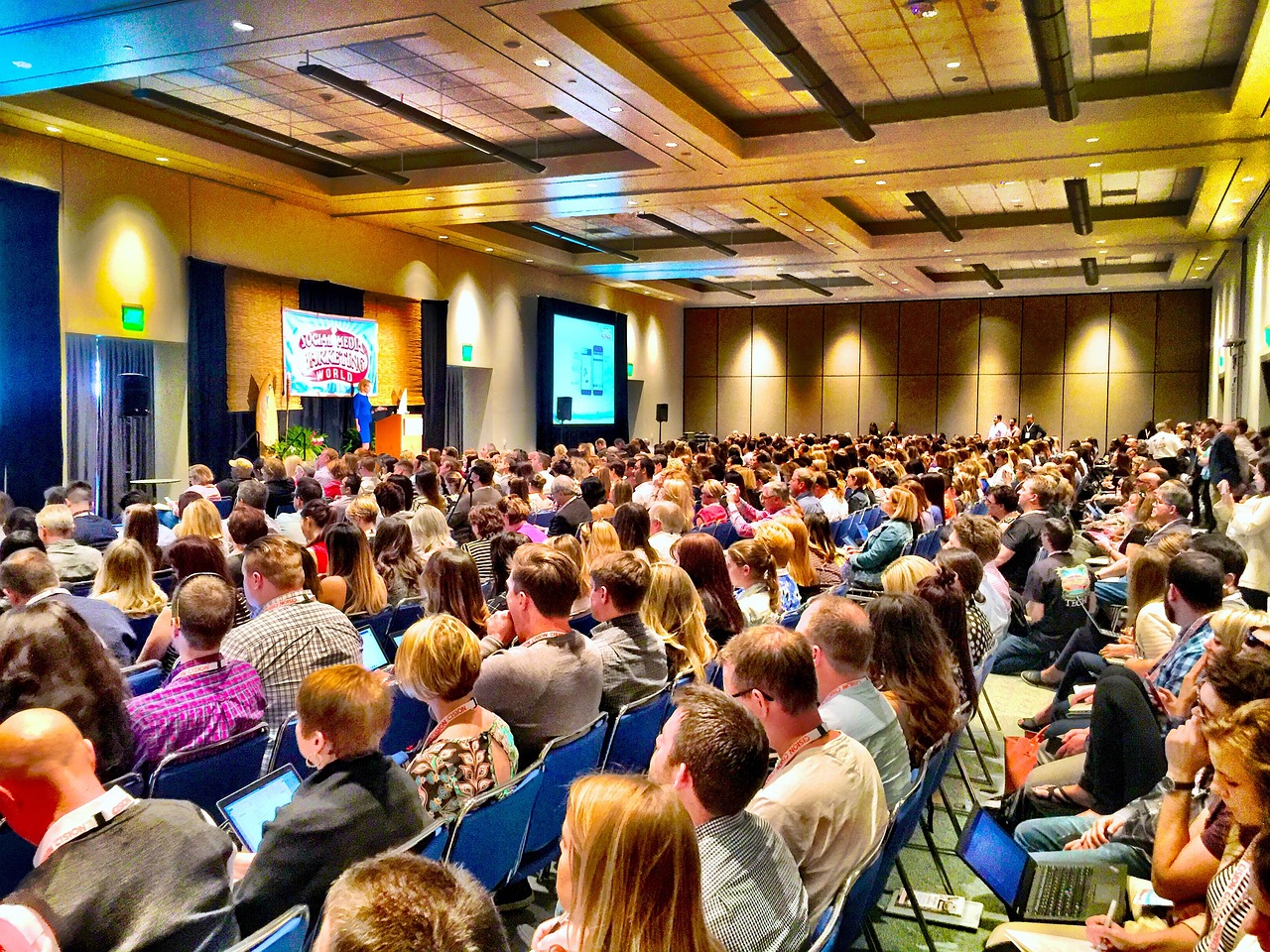Through the Digital Veil: Inside the World of VR Meditation
Can virtual reality deepen contemplative practice? Ross Nervig dons a headset and explores the promise and peril of mesmerizing worldscapes. The post Through the Digital Veil: Inside the World of VR Meditation appeared first on Lions Roar.

Can virtual reality deepen contemplative practice? Ross Nervig dons a headset and explores the promise and peril of mesmerizing worldscapes.

Real life overlaid with contemplative virtual reality, as created by the VR start-up aNUma.
Purple skin is a popular flesh tone where I am going. I’m meeting with Jeremy Nickel, an executive at Tripp, a VR meditation app that offers “mesmerizing worldscapes,” “guided visualizations,” and “captivating breathing exercises.” He’s agreed to give me a guided tour of the various landmarks in their metaverse.
The first place Nickel takes me is to the Zen garden. A digital breeze gently blows through the trees around the garden. There are stone benches and cairns weathered by the elements. Off to one side is a peaceful looking zendo.
“This is one of our most popular spaces,” reports Nickel. “It’s modeled after the backyard of one of our designer’s grandparents in Taiwan. We also have ancient ruins and a Tibetan temple in the mountains.”
I turn around in a full circle, taking it all in. It’s not perfect. Nobody would mistake this for the real deal, but there is a certain tranquility to the space. It’s peaceful enough to make me forget that I’m wearing a brick-like pair of VR goggles on my face and holding controllers in my hands.
Although virtual reality has been around for decades, it only recently entered the cultural arena with the arrival of affordable headsets. While VR remains almost totally the domain of the gaming industry, a few contemplative organizations like Tripp have carved out spaces where VR users can learn about and practice meditation. Curious, I borrowed a VR headset to explore a few of these meditation platforms while speaking with some thought leaders at the intersection between Buddhism and VR.
“When people go into virtual reality, they don’t expect to find a person leading meditations,” remarks Nickel. “They expect to find video games and people blowing things up. I think people in this world really know they need meditation, but they don’t know how to get it.
“The people who are using our app are not the people you usually see in Buddhist communities,” he continues. “They’re younger, they’re more male. They’re finding something in VR that they haven’t found elsewhere, which is a reason to meditate.”
With the click of a button, Nickel and I are somewhere in the Himalayas, outside a Tibetan-style temple. It is austere and majestic, and all around us craggy snow-capped peaks mingle with the heavens. I can sense my body feeling colder, wanting to reinforce the story my eyes and ears are telling me.
We enter the temple. It’s empty right now, but during sessions it fills with avatars, some looking like cartoon versions of their human counterparts, others sporting purple skin, green mohawks, and robes the color of the cosmos.

Tripp, a VR meditation platform, has several community spaces, including a Zen garden.
In Tripp, professional meditation teachers lead participants through meditations like “Focus,” where one learns to become more aware of the present moment through “attention-stimulating gameplay mechanics,” or “Calm” in which meditators are guided through a relaxation practice. Tripp also offers “Enlighten,” a collection of teachings from accomplished mindfulness instructors, as well as “Connect,” where VR users interested in meditation can gather together for live teachings, real-time meditation sessions, and discussions around the finer points of practice.
“Going into VR, I had some reservations,” admits Nickel. “Since you can make your avatar look like whatever you want, you can tell a fake story about who you actually are. So with that much inauthenticity possible, how do you have the core of truth? How do you build a community with trust and all the things you need for spiritual growth?
“But I was so wrong. The CEO of Tripp, Nanea Reeves, has a term I love: the ‘digital veil.’ You start to realize people are more real in virtual reality than they are in physical reality because of the digital veil protecting them. People will say stuff at our check-ins before a meditation event that they haven’t even told their wives. There’s something about it that creates this vulnerability. The place where I worried we wouldn’t be able to trust and connect and be authentic turns out to be the greatest place I’ve been to meet people.”
The final stop on our tour is a simulation of the “overview effect.” The overview effect is a paradigm shift that occurs for some astronauts who’ve been able to view the earth from outer space. They are filled with a sense of wonderment, self-transcendence, and a strong fellow-feeling for the billions of people back home. Edgar Mitchell, an astronaut from the Apollo 14 mission in 1971, put it like this: “You develop an instant global consciousness, a people orientation, an intense dissatisfaction with the state of the world, and a compulsion to do something about it.”
Nickel leaves me to experience the session alone. The program begins on the ground. Over a period of ten minutes, I travel skyward—from sea level, to the Himalayas, into the clouds, and then beyond into space. I travel until I’m about as far from my home planet as the International Space Station would be. I’m able to move orbitally around the little blue marble, viewing its seas and land masses in the light of the sun. On the earth’s dark side, cities are lit up like scatterings of sparks. Those little, intense points of light mark communities who’ve banded together, on this rock hurtling around a gaseous ball of fire.
I’m surprised at the feeling of buoyancy and the warmth with which I regard the world after this experience. Though I’m glad to be out of the goggles, it’s not hard to fathom the power of virtual reality and the role it might play in the future of our spiritual lives.
On a mountain hike in 2007, artist and molecular physicist David Glowacki nearly died in a fall. While suffocating because of a punctured lung, he had an out-of-body experience. Looking down at himself lying at the bottom of the cliff, he saw not his physical body, but a form composed of orbs of light, with light escaping into his surroundings. Glowacki felt no fear. Instead, peace overtook him.

From their homes, people all across the world can gather in Tripp’s metaverse to forge community and deepen their meditation practice.
This near-death experience inspired aNUma, a series of virtual reality simulations of what it’s like to see the body not as cells and matter, but as light and energy. He enlisted his best friend, the Buddhist lama Karma Justin Wall, to help as lead designer.
“It began as an art project to explore what it’s like to be an energy body, exchanging energy and playing in that way in virtual space,” explains Lama Karma.
Lama Karma invites me to an aNUma session known as “Ripple.” After donning my VR headset, I enter into a dark space. Overhead, a vault of stars is twinkling. Surrounding me are beings made of smoke and light, each representing somebody who—through a VR headset—has joined the circle from their home, somewhere across the globe. For hands, they have small quavering balls of light. Where their hearts are supposed to be there are larger orbs of light. Looking down, I realize I too am a being of smoke and light.
The conversation among us is minimal. It’s bizarre to hear normal, everyday voices emanating from ephemeral entities—one expects something a bit more ethereal. Lama Karma, however, has the soothing voice of a veteran meditation guide. We form a loose circle around something that resembles a wriggling string of molecules—like one might encounter peering through a microscope at amino acids. We check in as you would before a meditation session IRL.
Of the experience we’re about to begin, Lama Karma says, “I’m trying to navigate the boundary between innovation and loyalty to the tradition. Making it more open in a meaningful way without sacrificing depth—that’s been my project. The main thing is for this to be beneficial to people who are not Buddhists, have no interest in meditation, and would otherwise not have a point of contact with it.”
Over the course of an hour or so, we’re guided to meditate while performing simple movements: bringing our hand-lights to our bodies with the in-breath, opening our arms with the out-breath, pairing off and mimicking each other’s movements in a sidereal kabuki, breathing the orb of our heart-lights out of our bodies toward the center of the circle so our lights mingle. The underpinning of the session is the Buddhist compassion meditation practice called tonglen, “taking and sending,” which helps dissolve the border between one’s inner life and the outside world.
“Entering this environment, it already felt familiar to me,” says Prima Mai, a longtime meditator from the Canary Islands. “This energy body is like a personal memory. We are not so dense. We are not so much ‘me’ and a separate other.”
She’s not wrong. Uncannily, aNUma taps into our intuition that we’re more than just corporeal bodies, that there’s a little something extra in the mix. In the aNUma space, that little something extra is on display.
“Good VR is something that fundamentally aims to be aesthetically pleasing and immersive. For our purposes, we hope that it is also embodied and infused with wisdom,” says Lama Karma.
Toward the end of our session, Lama Karma guides us through a demonstration of aNUma’s future direction: end-of-life care. Its latest offering is called “Clear Light.” Each of us is asked to turn around so that the circle of practitioners is facing into the twilight darkness of space. Again, bringing our hand-lights to our bodies with the in-breath, opening our arms with the out-breath, we breathe our glowing heart orbs away from ourselves. With each breath, the orbs of light move farther away until their luminosity is no brighter than the stars in the virtual sky. Then their light goes out entirely. The idea is to help those who’ve been diagnosed with a terminal illness familiarize themselves with the final letting go that is death.

Tripp users undergo a simulation meant to trigger the “overview effect,” that is, a prosocial paradigm shift experienced by astronauts when viewing Earth from space.Buddhist teacher Andrew Holecek writes and teaches about lucid dreaming and dream yoga. He says of VR: “This is the closest thing I’ve experienced in the waking state to lucid dreams.” Holecek connected with Jordan Quaglia, an associate professor of psychology at Naropa University, to explore VR for its potential in the contemplative arts.
In 2018, the two coauthored a paper about lucidity and virtual reality detailing an experiment to assess whether lucid dreaming trainees felt more or less fear when faced with a threatening scenario in virtual reality.
Putting on a VR headset, participants were asked to walk along and step off a plank seemingly high above a city. In reality, they were walking on a wooden board lying on the lab floor, but in their headsets, they were many stories up in the air.
Although their rational minds knew they were completely safe, many participants could barely bring themselves to step foot on the plank, let alone take the leap of faith and jump off the end. But participants trained in lucid dreaming—in seeing through illusion—exhibited less fear and greater ability to step off the plank than the control group.
“One of the really exciting things about virtual reality,” says Quaglia, “is the chance to experience lucidity in profound ways that reflect back on our real-world experiences and offer perspective. Virtual lucidity is not only conceptual awareness or knowing that one is having a virtual experience. It can go deeper than that baseline level of awareness.”
Even renowned Buddhist teachers have found the VR experience helpful.
A few years ago, American nun and teacher Pema Chödrön tried VR and wrote about the experience. She described how she enjoyed the illusion of flying, her fearlessness in the face of the reptile and spider simulations, and how the feat of walking that plank fifty stories up left her palms sweaty with terror. The experience seems to have had a profound effect on her; she uses it as a springboard to discuss uncertainty, insecurity, and groundlessness. The Tibetan teacher Tsoknyi Rinpoche has also donned a VR headset and now references the experience in his dharma talks.
“VR is really good at two things,” says Alex Haley, a researcher at the Interactive Visualization Lab at the University of Minnesota. “It’s good at training, and it’s good at changing perspectives.
“There’s research to show how VR helps us understand people of different gender, race, age, and abilities. One study demonstrated that if I put you in front of a digital mirror with a different virtual body, you’ll start to respond as if that were your real body. Swapping bodies cultivates empathy and understanding in really cool ways.”
Holecek echoes Haley’s sentiments: “We don’t transform through philosophy or cognitive gymnastics. We transform when we feel things.”

Apple has recently entered the VR sector with their expensive Vision Pro headset. Its meditation apps blend cutting-edge technology with calming techniques.
Haley imagines a person curious about Buddhist meditation using VR to access a teacher and a Buddhist community from their living room. The VR headset itself acts like a pair of blinders against possible distractions, occluding the outside environment. “Particularly if you’re a beginner,” says Haley, “that can be extremely helpful, allowing you to contain your attention within whatever the virtual world is.”
Holecek too sees VR as a boon for teachers trying to reach new meditators. “When there’s no cultural adaptation taking place, that’s how traditions go extinct. If you don’t adapt, you die. This is an all-hands-on-deck time. This is not the time to sit back and watch with caution. Why not engage virtual reality as a skillful means instead of putting your head in the sand and hoping your tradition will maintain itself?”
“VR can teach us about our relationship to reality, whatever that is,” says Quaglia. “Whether lucidity is cultivated in dreams or waking experience or in virtual experiences, they all point to a similar truth—our relationship to reality isn’t just happening to us. It is a more creative process that we can actively participate in.”
According to Holecek, “One of the ways VR can help us understand the nature of reality is through seeing the process of how we construct it, how we get lost or immersed in the display.”
But when I ask Holecek about the dangers of VR in meditation, he says: “The promise is in direct proportion to the peril.”
Driven by money, operators in the VR industry are trying to muscle their way into the attention economy. Developers feel pressure to gamify and commodify the experiences they create. As Quaglia says, “The companies creating these headsets are, to some degree, invested in the opposite of what we value as contemplative practitioners.”
“I think with any technology, whether it’s VR or anything else, there’s a danger that the medium becomes the method,” says Haley. “Users need to understand that VR is only half the journey. The other half is integration. How does a VR experience inform your life going forward, moment to moment?”

 ShanonG
ShanonG 































